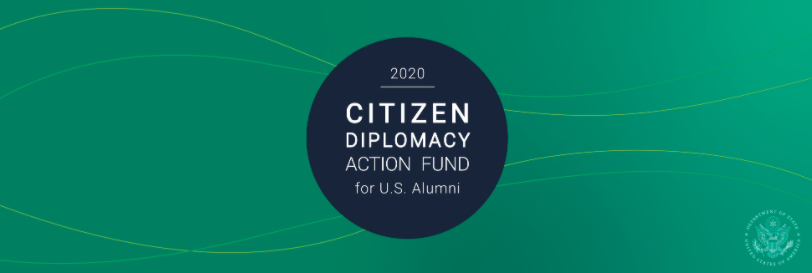
Are you planning to apply for a Citizen Diplomacy Action Fund (CDAF) grant? Want to increase your chances of having your application viewed favorably? Here are some tips and tricks to keep in mind when crafting your project proposal.
Project Narrative
First things first! After you have filled out your team information and your project information, you’ll want to complete your project narrative. A successful project narrative includes three core components: your project description, your project team and collaborators, and your project implementation.
Project Description
To begin your project narrative, a strong project description will give you a chance to explain how your information gathered fits into your project proposal. You can use literature review research to describe the history and context of your challenge, and use this context to help us understand the needs in your community, drawing on the SMARTER method to help identify your goals and objectives. It is important that your goals are broad in scope, whereas your objectives are more specific and narrow in scope. The project description should be well-written with your goals clearly laid out and supported by clear and concise objectives.
Team and Collaborators
Your project narrative should also include information on your team and collaborators. This will include a capacity statement, which details the experience and expertise your team has, as well as indication on who will be responsible for what – you can draw on the RACI method to determine who is responsible as your team carries out different project tasks and work. This is also where you will note any partners that will contribute to project activities.
Implementation Plan and Timeline
Lastly, your project narrative should include an implementation plan and timeline, which consists of an evaluation plan, a media plan, a vision for sustainability, and a health and safety plan. Here you will lay out the timeline and implementation plan by describing specific activities; how you plan to raise visibility of this project; and how you plan to continue the project beyond the grant period.
Monitoring and Evaluation (M&E)
You will use a Monitoring and Evaluation (M&E) plan to portray your goals and objectives, while showing ways you can improve your approach in the future. The proposal is in itself a request of the financial, human, and material resources you need to achieve your intended income, and your plan should tell your funder of how you plan to achieve your intended goal, and how you plan to track success of your objectives. Once you’ve been awarded a CDAF grant, you will need to implement this plan and document your milestones along the way, as you will need to report your progress in a milestone report. Having a strong M&E plan is critical to a successful project proposal.
Media Plan
Finally, in your media plan, you will want to focus on how you will promote your project to the public and beneficiaries, and which forms of media will best suit your audience. Your sustainability plan should answer the most important questions about what lessons you learned in your first run of the project. This ties back to your M&E plan and will dive further into what worked and didn’t work, and how you can improve your approach next time.
Final Tips:
Competitive proposals are:…
- Well-written
- Ambitious, yet practical
- Supported by diverse stakeholders
- Sustainable
Be sure to start your application early, submit on time, meet eligibility and funding requirements, and ask for feedback! Ultimately, if your project proposal meets the required guidelines, clearly articulates your vision for executing your project, and shows long-term impact for the community in which you plan to work, your chances of getting your CDAF proposal accepted have a higher acceptance rate.
Good luck!
